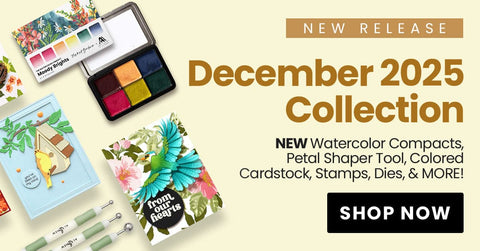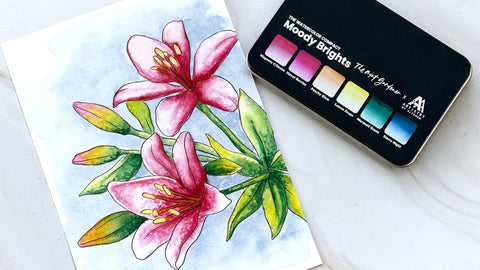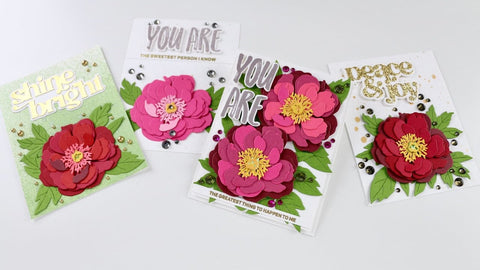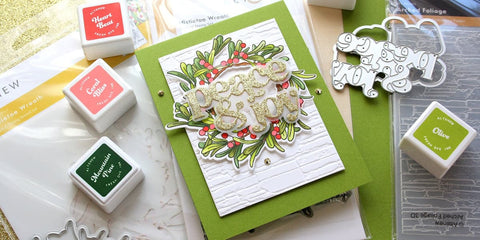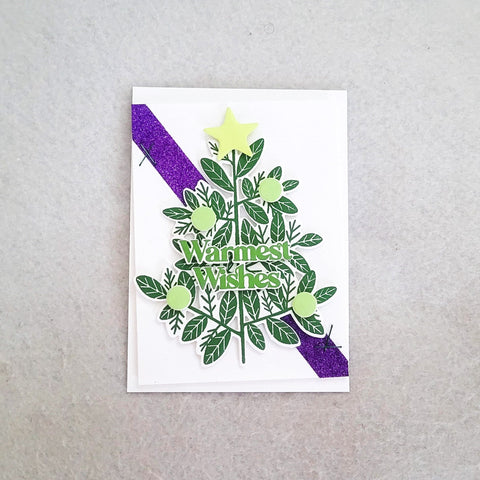How to Make Unique Hand-Stitched Greeting Cards
Last Updated: October 28, 2025
Are you like us, who are captivated by the intricate beauty and tactile delight of handmade stitched cards? Stitching your cards is one of the more advanced cardmaking techniques around, but the results that they give are exquisitely stunning! If you've ever been mesmerized by stitched greeting card videos but hesitated to try them yourself, fear not! We're here to inspire and empower you to embark on this advanced cardmaking technique.

Join us today as we delve into the art of stitching and reveal the secrets behind crafting your own remarkable stitched cards. Whether you're a seasoned seamstress or new to the needle, this technique is accessible to all skill levels. So let's go try out this technique and expand your creative skills!
What Are Stitched Cards?
Don't you just love the look of stitched and embroidered designs? Stitched cards are handmade greeting cards that incorporate stitching techniques using materials such as metallic thread, yarn, or embroidery floss. Instead of relying solely on paper-based elements, stitching adds a three-dimensional and textured aspect to your card design.

These cards often feature intricate patterns, designs, or shapes that are created by sewing through cardstock or other materials. The stitching can be done by hand using a needle or with the help of a sewing machine, depending on the desired effect and your crafty preferences.
Stitched cards offer a unique and personalized touch to your traditional greeting card, allowing for endless creative possibilities. Combining paper and stitching on your cards creates a visually appealing and tactile experience for your recipient, making them genuinely one-of-a-kind and memorable handmade gifts!
How to Do Card Stitching on Your Projects
If you're feeling extra crafty and are up for a challenge, why not amp up your cardmaking designs with some stitches? It's time to get sewing! All you need are some additional materials to go along with your usual crafty supplies. Don't worry - most of these materials can be found in your regular household, such as thread, needles, thimble, and scissors. For the other items, you can buy them at your favorite online crafting stores (ahem, Altenew)!

To get started on making stitched cards, you'll need the following supplies:
- Heavyweight cardstock - Since you'll be doing some stitching with threads or floss, you will need stronger and more durable paper to withstand all that sewing. For stitched cards, we recommend cardstock that is 110lb or higher.
- Threads or floss - Of course, you'll need some threads or floss! These are easily available in different sizes and thicknesses, so you can play around with different options on your card. For beginners, we recommend starting with some simple 2-ply threads to get some practice.
- Stamps and inks - If you want to stitch a certain pattern or image, such as a large rose, you will need a stamp and some inks to help guide you on the outline and color of the design.
- Dies - To be more specific, you would need dies that make patterns and holes on cardstock, such as the Pegboard Canvas Cover Die or the Cross Stitch Canvas Die. This supply is the most essential of all because the die will serve as the gateway to your stitches!
- Stencil - Besides using stamps, you can also create inky imprints on your cardstock to serve as the cross stitch pattern.
Step-By-Step Guide on Cross-Stitching Your Cards

- Start by preparing your materials. Choose your threads, color palette, and cross-stitch design.
- Stamp or stencil your image onto the cardstock using your chosen inks.
- Then, cut your cardstock using a canvas die. For more intricate patterns and smaller details, use the Cross Stitch Canvas Die. The Pegboard Canvas Cover Die is perfect for thicker cotton threads and more loose designs.
- Next, insert your thread through the eye of the needle. You can use a needle threader to make this easier. Leave a tail of thread at the end for later securing.
- Then, insert the needle from the backside of your cardstock, bringing it to the front at the starting point of your stitch.
- Secure the tail of your thread on the backside of your cardstock with some tape.
- With the tail secured, continue pulling the needle and thread all the way through the cardstock, completing your first stitch!
- You can continue inserting your needle in a systematic manner and in varying directions - the choice is yours! Just make sure to work with the pattern that you have, alternate colors, and you’re golden!

Tips on Creating Beautifully Stitched Greeting Cards
The threading and needling process may take a while, but after you're finished, the results are worth it! Here are a few more tips to embellish your stitched card design:
- Experiment with stitches: Explore various stitching techniques to add depth and texture to your cards. Basic stitches like a straight stitch, backstitch, running stitch, or cross-stitch can be used, or you can try more intricate stitches for more detailed designs.
- Add some glimmer: Whether you use metallic threads in your stitching, accent cards with iridescent pearls, or pair your design with a hot-foiled design before stitching, you can make your stitches stand out even more by adding some glitz and glamor.
- Consider color coordination: Choose thread or floss colors that complement your card design. Harmonizing the colors will enhance the overall appearance of your stitched card.
- Practice stitching techniques: If you're new to stitching, practice on scrap fabric or paper before working on your actual card. This will help you refine your technique and gain confidence before stitching on your cardstock.

- Use templates or stencils: Utilize templates or stencils to create uniform shapes or patterns on your card. This can make your stitching more precise and consistent.
- Take your time: Hand-stitched cards require patience and attention to detail. Take your time while stitching to ensure neatness and accuracy. Rushing through may lead to mistakes or uneven stitches.
- Experiment with embellishments: Explore the use of additional embellishments like beads, sequins, ribbons, or fabric scraps to enhance the visual appeal of your stitched cards. Be creative and add elements that complement your design!
- Personalize your cards: Add a personal touch by incorporating die-cut names, sentiments, or meaningful symbols into your design. This will make your stitched card even more special and heartfelt!
Stitch Some Extra Love Into Your Crafts With These Tips!
Have we convinced you to take up stitching yet? If you still decide that the stitching process isn't for you, no worries! You can still achieve that embroidered look with some of our stitch-inspired stamp sets, Cross Stitch Flower, and Sewn with Love, without the fuss of stitching!
We hope you get to try making stitched greeting cards today! For more inspiration and project ideas on cardmaking techniques like these, be sure to drop by the All About Crafting blog!



